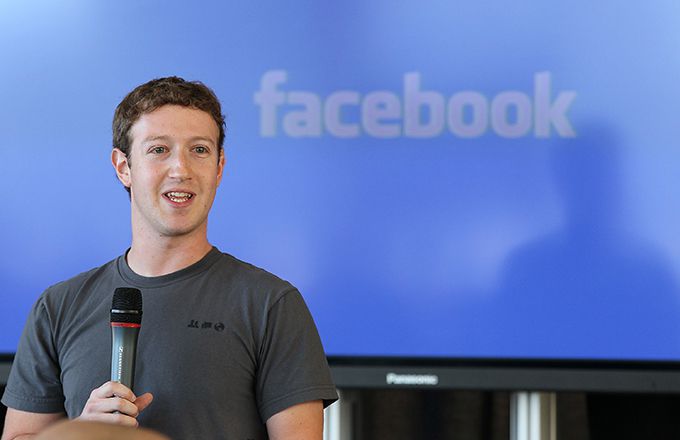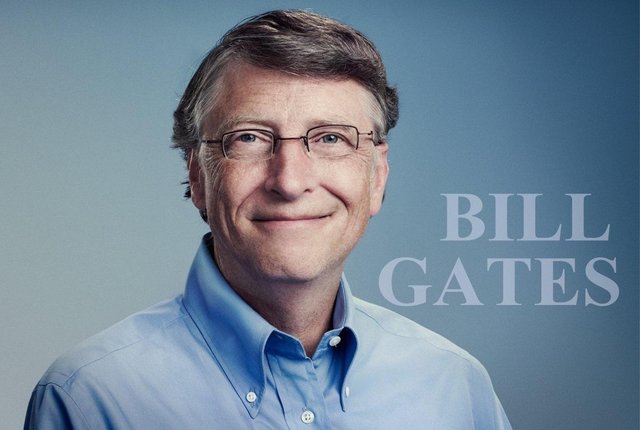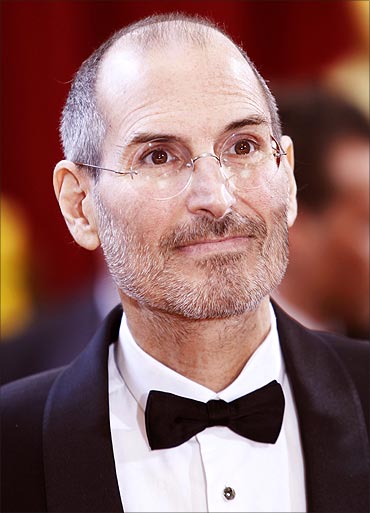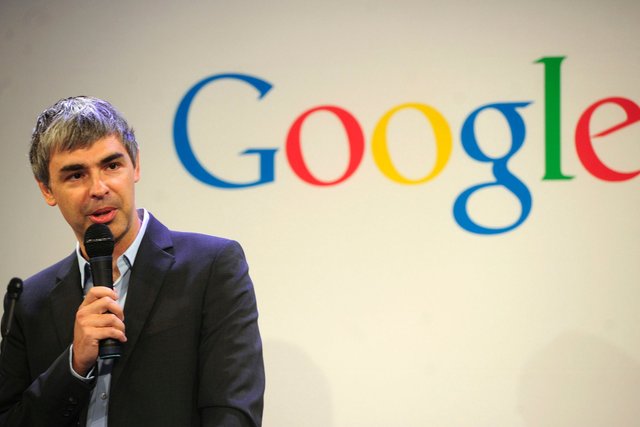success stories of world's famous entrepreneures
Mark Zuckerberg

Early Life and Education
Mark Zuckerberg was born on May 14, 1984 in White Plains, New York, and was raised in nearby Dobbs Ferry. He was born into a well-educated family and developed an interest in computer programming at an early age.
At the age of 12, Zuckerberg created a messaging program named Zucknet that he implemented as an inter-office communication system for his father's dental practice. Due to his early signs of success, his parents got him a computer programming tutor while he was still in high school, and they enrolled him in a prep school in New Hampshire.
After graduating from prep school, Zuckerberg enrolled in Harvard University.
Success Story
While many intelligent people attend Harvard University, Mark Zuckerberg became known quickly as the go-to computer programmer on campus. By his sophomore year, he had already built two programs: CourseMatch and FaceMash. Both programs became wildly popular, but the university shut down the latter program after it was deemed to be inappropriate.
Based on his acclaim on campus, Zuckerberg partnered with friends to create a social networking site that allowed Harvard students to connect with each other. The site officially went live in June 2004 under the name "The Facebook," and Zuckerberg ran it out of his dorm room.
After his sophomore year, Zuckerberg dropped out of college to pursue what was then called Facebook full-time, and the website reached 1 million users by the end of 2004.
This explosion of user growth attracted the attention of many venture capital firms, and Zuckerberg eventually moved out to Silicon Valley in 2005. Facebook received its first round of venture capital (VC) investments from VC firm Accel Partners, which invested $12.7 million in the site that was still only open to Ivy League students.
By the end of 2005, however, Facebook was opened up colleges and other schools, causing the website to reach 5.5 million users. Since 2005, Facebook has received numerous acquisition offers from the likes of Yahoo and Microsoft, has been through legal battles, and has increased the number of its users all the while.
As of 2015, Facebook has over 2 billion monthly active users, and it is valued at a market cap of $272 billion as of July 2015. Zuckerberg, who owns nearly 423 million shares of Facebook stock, has become one of the youngest multibillionaires in history.
Net Worth & Current Influence
Thanks to Facebook, Mark Zuckerberg has a net worth of $34.8 billion as of July 2015. At the age of 31, this makes him one of three billionaires with a net worth higher than their current age in billions of dollars.
When it comes to influence, Zuckerberg has signed the Giving Pledge, which means he will donate at least 50% of his net worth to philanthropic causes before he dies. In 2010, for example, he donated more than $100 million to save the Newark school system in New Jersey.
Most Influential Quotes
"The biggest risk is not taking any risk ... In a world that's changing really quickly, the only strategy that is guaranteed to fail is not taking risks."
This is a perfect example of Zuckerberg's thought process. As someone who has created products since the age of 12, he knows that taking risks is necessary to achieve success.
"Move fast and break things. Unless you are breaking stuff, you are not moving fast enough."
This type of "ask for forgiveness and not for permission" attitude has helped Zuckerberg build one of the most influential companies of all time.
Bill Gates

Bill Gates – A Success Story
Bill Gates was born on October 28, 1955 in Seattle in a family having rich business, political and community service background. His great-grandfather was a state legislator and a mayor, his grandfather was vice president of national bank and his father was a lawyer.
Bill believed in achieving his goals through hard work. He also believes that if you are intelligent and know how to use your intelligence, you can reach your goals and targets. From his early days Bill was ambitious, competitive and intelligent. These qualities helped him to attain great position in the profession he chose also Bill was deemed by his peers and his teachers as the smartest kid on campus; Bill’s parents came to know their son’s intelligence and decided to enroll him in a private school, known for its intense academic environment. That was the most important decision in Bill Gate’s life where he was first introduced to computers. Bill Gates and his friends were very much interested in computer and formed “Programmers Group” in late 1968. Being in this group, they found a new way to apply their computer skill in university of Washington. In the next year, they got their first opportunity in Information Sciences Inc. in which they were selected as programmers. ISI (Information Sciences Inc.) agreed to give them royalties, whenever it made money from any of the group’s program. As a result of the business deal signed with Information Sciences Inc., the group also became a legal business.
Bill Gates and his close friend Allen formed a new company of their own, Traf-O-Data. They developed a small computer to measure traffic flow. From this project they earned around $20,000. The era of Traf-O-Data came to an end when Gates left the college. Upon graduating from Lakeside Bill enrolled in Harvard University in 1973, one of the best universities in the country, He didn’t know what to do, so he enrolled his name for pre-law. He took the standard freshman courses with the exception of signing up for one of Harvard’s toughest mathematics courses. He did well over there, but he couldn’t find it interesting too. He spent many long nights in front of the school’s computer and the next day asleep in class. After leaving school, he almost lost himself from the world of computers. Gates and his friend Paul Allen remained in close contact even though they were away from school. They would often discuss new ideas for future projects and the possibility of starting a business one fine day. At the end of Bill’s first year, Allen came close to him so that they could follow some of their ideas. That summer they got job in Honeywell. Allen kept on pushing Bill for opening a new software company.
Within a year, Bill Gates dropped out from Harvard. Then he formed Microsoft. Microsoft’s vision is “A computer on every desk and Microsoft software on every computer”. Bill is a visionary person and works very hard to achieve his vision. His belief in high intelligence and hard work has put him where he is today. He does not believe in mere luck or God’s grace, but just hard work and competitiveness. Bill’s Microsoft is good competition for other software companies and he will continue to stomp out (challenge) the competition until he dies. He likes to play the game of Risk and the game of world domination. His beliefs are so powerful, which have helped him increase his wealth and his monopoly in the industry.
Bill Gates is not a greedy person. In fact, he is quite giving person when it comes to computers, internet and any kind of funding. Some years back, he visited Chicago’s Einstein Elementary School and announced grants benefiting Chicago’s schools and museums where he donated a total of $110,000, a bunch of computers, and provided internet connectivity to number of schools. Secondly, Bill Gates donated 38 million dollars for the building of a computer institute at Stanford University.
"such as the meaning of his name is Bill Gates, which means the gate of the money..."
Steve Jobs

In 1976, Steve Jobs and Steve Wozniak created the first Apple, Inc. (Nasdaq: AAPL) computer, the Apple I. Just as importantly, their company had received seed capital from early investors. The next year, they were ready to unveil their newest creation, the Apple II, their first mass-produced computer.
They debuted the home computer at that year’s West Coast Computer Faire, and it went on to become one of the first successful mass-produced desktop computers. Jobs’ close attention to the machine’s appearance was already evident based on the time he spent designing its beige plastic case. Steve Wozniak was primarily responsible for the technology of the Apple II.
Steve Jobs, Millionaire
The computer’s success made Jobs a millionaire by the time he was 23, in 1978. That same year, with the company growing, Jobs and Wozniak hired Mike Scott from National Semiconductor to serve as CEO. By late 1980, Apple was ready to hold an initial public offering (IPO), a sale that generated more capital than any IPO since the 1956 Ford Motor Company’s (NYSE: F) offering, and created roughly 300 millionaires instantly, more than any IPO in history.
By 1981, Apple was one of the three top producers of personal computers in the United States, and possibly the biggest. But other, bigger competitors were getting into the market, most notably International Business Machines Corp. (NYSE: IBM), whose most popular model surpassed the Apple II as the best-selling PC by 1983. The next year, the computing colossus also boasted $4 billion in annual PC revenue, more than doubling Apple’s revenues. (See also: Why IBM Will Go On Forever.)
The Personal Computer People Wanted
But Apple was on the verge of a breakthrough that would redefine personal computing. The breakthrough had its roots in 1979, when Jobs first saw the Xerox Alto. The Alto was, essentially, the first mouse-driven computer. Until then, operating a computer was a matter of learning the computer’s language and typing in commands. The visual interface of the Alto changed all that, and Jobs immediately saw the potential.
Apple unleashed the mouse-driven user interface to the public in a computer it called the Macintosh. When Jobs introduced it at a shareholders' meeting in early 1984, the crowd went wild.
But the Macintosh was expensive, roughly $2,500 apiece, and sales disappointed. But the tech industry perked up and took more than just notes. Microsoft quickly began to develop its own mouse-driven user interface. And much cheaper PCs running the Microsoft software popped up overnight. (See also: Who are Apple's main competitors in the tech industry?)
Jobs Leaves Apple
In 1983, Apple had hired PepsiCo, Inc. (NYSE: PEP) executive John Sculley as its CEO. By 1985, he and Jobs were battling over the future of Apple. Sculley wanted to focus on less-contested niches such as education, small business, and home markets. But Jobs wanted to take on the IBM PC in all markets with what he believed was superior hardware and software. Those tensions came to a head in 1985, when Jobs resigned, taking a handful of Apple employees with him to create a new company, called NeXT, Inc.
Jobs seeded the new company with $7 million of his own money, which the company burned through in its first year. Billionaire Ross Perot stepped in as an investor, and the company released its first product, the NeXT Computer, in 1990. It was state-of-the-art, but, at $9,999, too expensive for most, especially its target customer—the education sector. By 1993, the company had only sold 50,000 machines, and decided to switch to software development. The move led to its first profit, when it netted $1 million in 1994.
Pixar and a Share of Disney
At the same time, however, Jobs became involved with a venture that would go a long way toward cementing his reputation and his fortune, when he bought Lucasfilm's computer graphics division for $10 million. The standalone company would be renamed Pixar and create a generation of iconic children’s movies, including Toy Story, Monsters, Inc., Finding Nemo, The Incredibles and WALL-E. In 2006, The Walt Disney Company (NYSE: DIS) acquired Pixar for $7.4 billion in stock, making Jobs the biggest single shareholder of The Walt Disney Company.
While Pixar was working on its first feature film, Jobs’ NeXT continued to struggle. After shifting its focus to become a software-only company in 1993, it laid off 300 of its 540 employees. But it had managed to create an impressive and original operating system, called NeXTSTEP. In 1996, Jobs began to speak to Apple again. And by the end of the year, Apple agreed to pay $429 million in cash for NeXT, along with 1.5 million shares of Apple, the latter of which went directly to Jobs, who came along with NeXT, initially as a consultant. (See also: Steve Jobs' 10 Most Innovative Creations.)
Jobs Returns to Apple
Just seven months after the deal was finalized, Jobs was named Apple’s interim CEO. To turn the company toward profitability, he quickly slashed a number of beloved projects and acquired a reputation for firing people on the spot. He also modified the company’s software licensing business, making it too costly for other companies to continue to make machines that ran Macintosh software.
More importantly, the cutting-edge technology developed by NeXT over the previous 12 years began to filter into Apple products. NeXTSTEP, its coveted operating system, became Mac OS X, while visually attractive and consumer-friendly products such as the iMac boosted sales. By 2000, the Apple board was ready to make Jobs the company’s official CEO.
Changing How We See Devices
As CEO, Jobs began to look beyond the PC again, first with the groundbreaking iPod digital music player, which changed the way people listen to music. Prior to the iPod’s launch in 2001, very few people listened to music on portable digital players. By 2012, more than 350 million devices had been sold worldwide.
The iPod’s sleek design and easy user interface paved the way for the company’s 2007 release of the iPhone, which revolutionized cellular phone design. In 2014 alone, Apple sold roughly 170 million iPhones worldwide. (See also: What Moves Apple's Stock Price?)
Not content to forever alter the way people used mobile phones and listened to music, Jobs launched the iPad in 2010. The very first version of the compact tablet computer with few buttons and a touch screen sold more than 250 million units. It has been credited with singlehandedly revitalizing the previously moribund market for tablet computers.
Taking Apple to the World's Most Valuable Status
Jobs famously micro-managed every detail of the devices' design, functionality and user-interface. The success of all three devices was profound. By 2011, Apple surpassed Exxon Mobil Corp (XOM) as the largest corporation in the United States, with a market capitalization of roughly $355 billion. At the beginning of Jobs’ second reign, in 1997, Apple’s market cap was approximately $3 billion.
In 2011, with Apple at the summit of not just the tech industry, but of all of American business, Jobs resigned as Apple's CEO. He was suffering from pancreatic cancer, and knew he would soon die. Even after his resignation, he stayed on as chairman of the board, continuing to work for Apple until the day before his death.
LARRY PAGE

SUCCESS STORY OF LARRY PAGE
“I just want to do what I love, namely working with computers. For me, doing what I love, success will come with itself automatically. ”
Google is not something foreign to you. This search engine is now widely used by many people to help find information. But now google has evolved, not only search engines but is equipped with email, maps, social networking and more. Behind the success of Google Larry Page have a successful birth and develop until it is today.
Founder Larry Page was Google Inc., a company engaged in the IT field. Sergey Brin Larry and colleagues managed to make Google the largest search engine company in the world. Google brings Larry Kesuksesa crowned in five major groups of the richest men in America by Forbes Magazine.
Lawrence Edward Page was born in Michigan, USA March 19, 1973. Since the age of 6 years, Larry has been interested in computers. His interest in computers since his father is a professor of computer science and his mother is a computer programmer. Larry received a degree from the University of Michigan, while he achieved a master’s degree in computer science from Stanford University, California, USA. Sergey Brin Larry together managed to create a search engine that has the ability to work efficiently, it is very sophisticated and has a wide range.
Larry had revealed that Google has a goal to process information and make it useful and accessible to everyone. Google launched in 1996 and continues to experience rapid growth until now. Within three years of search queries grew to 10,000 searches per day. In the next year increased to 500,000 searches per day. The greater development of Google’s business after developing a television channel, the mobile phone to buy a video portal, YouTube. Currently Google is able to accommodate 200 million searches per day with a gain of about 10 million dollars U.S. per day.
Despite having achieved extraordinary success, Larry remain modest in their daily life. But for the sake of his business, Larry has a private jet Boeing 767 to the mobility of business that demands high speed.
Sarah Michelle Gellar

"Baking is a billion-dollar industry that has not been modernized," says Sarah Michelle Gellar, cofounder of subscription-based baking kit startup Foodstirs.
Last September, Gellar joined friend and PR specialist Galit Laibow and former Martha Stewart exec Gia Russo to launch their culinary lifestyle brand with a collective mission to bring their families and friends together in the kitchen. Both mothers, Gellar and Laibow had been hunting for fun and educational family activities that tore their kids away from their cell phones and TVs, but quickly became frustrated when they discovered limited options. Specifically, they hit a roadblock when looking for baking projects with clean ingredients and fun, easy assembly. "People are clamoring for a better quality product and we knew we had an idea for innovative disruption," she says.
"I've worked on billion-dollar franchises," says Gellar, who vanquished vampires from 1997-2003 as Buffy the Vampire Slayer, "and, at the same time, I think I can speak directly to the consumer."
Foodstirs offers monthly boxes that come with mixes, sprinkles, popsicle sticks, cookie cutters and all other necessary tools to put the recipe together minus oil, eggs, yogurt (a healthy substitute for binding in frostings and batters) and baking pans. Box ingredients are preservative-free, non-GMO and void of artificial dyes and flavors.
"I think subscription is a really interesting way to be direct to your audience and get the products in their hands," says Gellar. Foodstirs baking kits are available for 3-month ($72), 6-month ($132), and 12-month ($252) subscriptions and single kits and tools are also available for order online. Right now, the startup is offering seasonal specialty mixes for heart-shaped brownie pops, cake pops, cookie kits and more for Valentine's Day.
"We are putting all of our resources into creating the best quality product and then when you move to retail, you've already had that direct contact with your audience," says Gellar. "We'll know what's already working organically." Gellar's goal is to take her lifestyle brand worldwide and ultimately have her own retail stores. Which Foodstirs milestone is she most looking forward to? "I think, you know, ringing the stock exchange when our company goes public would be a great day," she admits.
"When you go to investors and say 'Buffy has an idea for a business,' see how seriously you get taken," says Gellar. A celebrity turned first-time entrepreneur, not everything came easy to Gellar and her team while starting out. In fact, the team faced challenges with funding and shipping their product just like any other new founders working to figure it out. "If you have an idea, you have to believe in yourself when no one else will and go after it. [There were many] doors slammed in our face and times when we weren't taken seriously, but it only takes one person. That right person will be there to help you shape that idea and grow it."
Walt Disney

Walt Disney Success Story
Walt Disney was among the most creative man ever lived on this planet whose huge dreams actually came true. He along with his brother Roy O. Disney co-founded ‘The Walter Disney Company’ commonly known as ‘Disney’ on October 16, 1923. It is currently the second largest cable and broadcasting company in terms of revenue. He is regarded as cultural icon and well known for his great contribution to cartoon animation industry. He was a cartoonist, voice actor, animator and film producer, and he really inspired everyone with his dedicated nature towards his work.
Early Life of Walt Disney
Walter Disney was born on December 5, 1901 in Chicago, to Elias Charles Disney and Flora Call Disney. His childhood days were interrupted because his family moved from Chicago to Missouri and once again to Kansas City. He also worked as a newspaper boy to support his family and didn’t have much time for schools. Although he started the Park School of Marceline in fall, 1909 together with his younger sister Ruth.
In his free time, he went to the theatre where he studied vaudeville. He was a big fan of Charlie Chaplin and loved drawing cartoons for school paper.
When America entered the Great War, he showed his patriotism for his country and applied to join army. Although he was rejected because he was 16. But he finally supported his country during the war by joining Red Cross unit where he worked as an ambulance driver.
Walt Disney Successful Journey
Walt Disney always desired to become an actor but later decided to draw political caricatures or comic strips for a newspaper. His brother Roy got him a job at the Presmen Rubun Art Studio where he created advertisements for newspaper, magazines and movie theatres. At this studio he met cartoonist ‘Ubbe Iwerks’ and they formed a company ‘Iwerks-Disney Commercial Artists’ which was short lived.
Walt Disney was filled with wonder and delight for this business and while working for the company he created his own cartoon ‘Laugh-O-Grams’ for which he actually borrowed camera from the company. This was a success and Disney’s cartoon really got appreciation from Kansas City and after this he was in a position to acquire a studio and recruit his own animators. But he was not successful in paying high salaries of his employees.
So he decided to move to Hollywood for which he sold his camera in July 1923. He went to many studios but nothing worked out and he finally asked his brother Roy and his friend cartoonist Iwerks to join him and they together began the Disney Brother’s Studio.
He was looking for an idea for character of his cartoon. He came up with the idea of a mouse which he called Mortimer, the name eventually changed to ‘Mickey Mouse’.
It was introduction of sound which made Mickey Mouse, among the most popular animated character in the industry. By that time, every child loved Mickey Mouse. Then animations turned into reality with the release of Disney toys, caps and dresses which became popular and revolutionize the cartoon industry.
He later on worked on creating his cartoon world into reality for people.He came up with the idea of Disneyland also called Disney Parks which is really a success for his company.He is known for his experimenting style of working which made him incredibly successful.
Walt Disney died of cancer on 15 December 1966 , 10 days after his 65th birthday. We all are aware with the success of ‘The Walter Disney Company’ .This was the result of innovative and passionate man Walt Disney. He was a true hero of animation and cartoon industry for which he would always be loved and remembered.
Thanks for the info. They are all grate people who brought changes to the world at large.
Thanks for inform
Congratulations @thakursurya1! You have received a personal award!
Click on the badge to view your Board of Honor.
Do not miss the last post from @steemitboard:
Congratulations @thakursurya1! You received a personal award!
You can view your badges on your Steem Board and compare to others on the Steem Ranking
Vote for @Steemitboard as a witness to get one more award and increased upvotes!